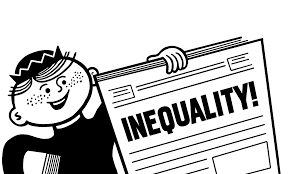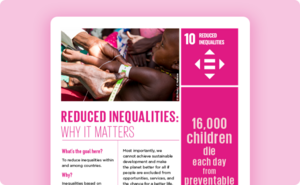Group13 proposal
1. Issues and Problems
Our dataset contains the entire countries' data of the world, it has lots of dimensions of data that can show a specific aspect of the country. Our problem may be which aspect we want to explore and how deep we can explore in our dataset. The dataset also has a problem that some counties don’t have the data for some years, such as Bahrain doesn't have any data before 2010,but after 2010, thay have some data uploaded in the dataset.If we want to make a visualization of every country, it may cause some difficulties. The graph may be less straight-forward and the readers may sometimes can’t get the important message we want to convey in our dataset.
2. Motivation and Objectives
The statistical tables provided by the united nations development program (UNDP) mainly present an overview of key aspects of human development, by using rough charts and colouring clusters of countries. Such visualization not only fails to convey comprehensive insights from the dataset but also cannot display data interactively. Moreover, the information in UNDP is interconnected, but due to individual visualization, correlations between factors cannot be displayed. Furthermore, the team desire to establish a better visualization pattern to integrate and analyze the data provided by UNDP and provide authority to draw practical decisions. To solve those issues, the team is motivated to better visualize the data provided by UNDP and design a dynamic and interactive dashboard to provide authority integrated and meaningful information. R Shiny will be used as the code base, and functions available in the ggplot package will be employed to develop the visualization. In ggplot, there are abundant visualization tools can be applied. The flexibility of the package is embodied in the design of different layers, which are efficient to achieve the visualization of correlations between factors, and finally, attain the objectives of the team.
3. Review and Critics of Past Works
Human Development Report 2019 The official published report provides a very detailed explanation of the situation of the world at present. In the report, “Inequalities” is mentioned everywhere, and it is indeed the most important core topic of the report. Following is a figure from the Human Development Report 2019.
In the published report, the editor uses a lot of bar charts, bubble charts and other types of simple but easy-understanding charts. With the use of Shiny, more interactive functions can be applied so that the team will be able to achieve interactive manipulation, which is one of the goals of the project. The users of the visualization application can easily set comparisons between the countries, grasp statistical results or categories of their interest. The report also reveals some statistical calculation:
There are also some aspects can be improved in this project. In the Human Development Report (HDR) report, the number of statistic graphs is limited due to publish requirement that the number of pages shouldn’t be too big. While in Shiny we can get rid of this restriction. Indeed, HDR also provides online interactive charts, but only with line graphs, of which utility is very primitive. It makes graphs overly messy to use nearly 200 lines to represent all the countries in the world.

